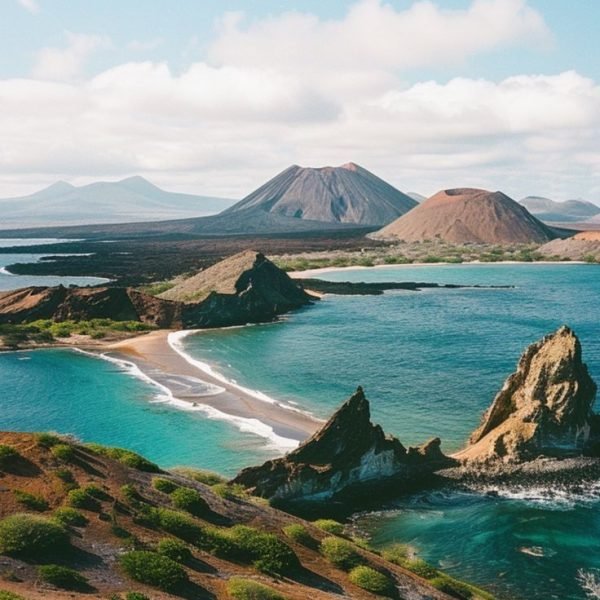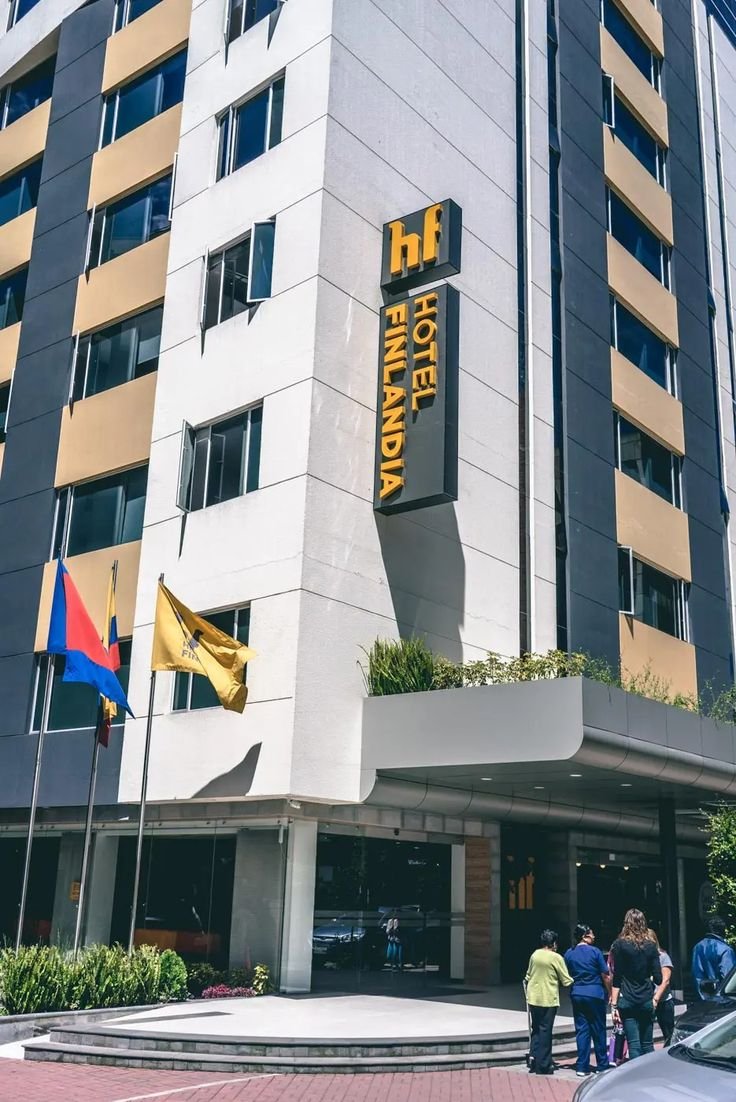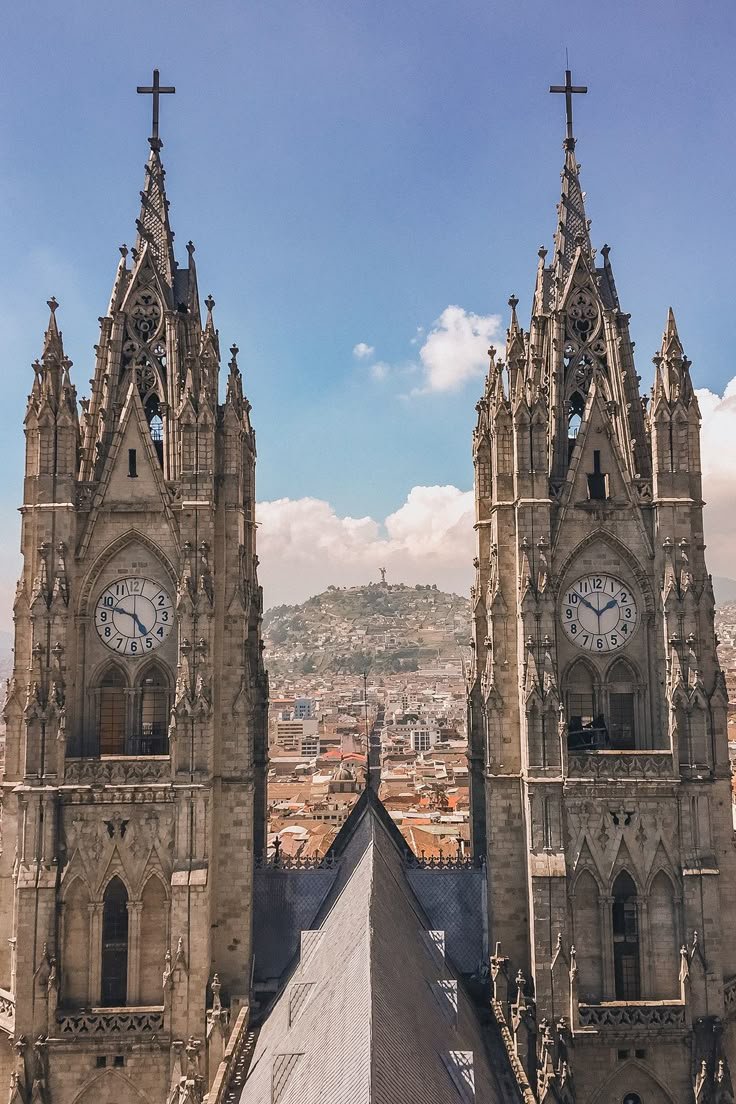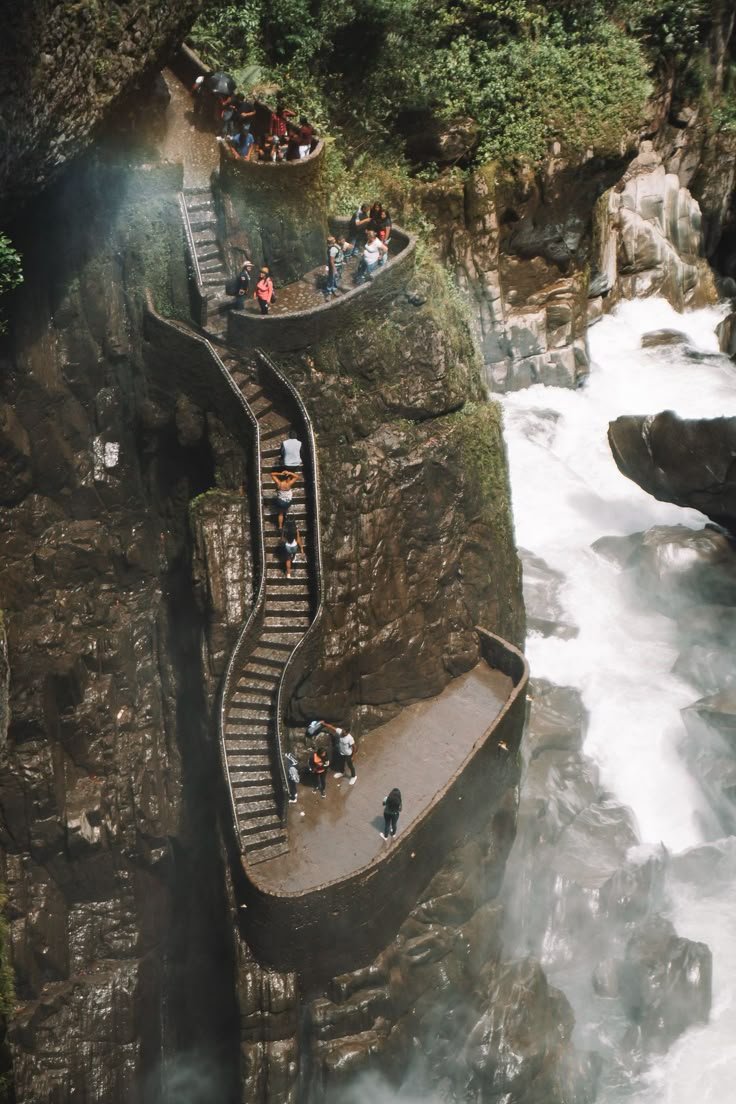Ecuador
Welcome to Ecuador
Nestled on the equator in South America, Ecuador is a captivating destination that offers an extraordinary blend of natural wonders, cultural richness, and warm hospitality. Known as the “Country of Four Worlds,” Ecuador encompasses the Amazon rainforest, the towering Andes mountains, the Pacific coastline, and the unique Galápagos Islands. This small yet diverse nation invites travelers to explore its vibrant cities, pristine landscapes, and remarkable biodiversity, making it a must-visit spot for adventurers, nature lovers, and culture seekers alike.
Ecuador is home to approximately 18 million people, with a rich cultural tapestry woven from 14 distinct Indigenous groups, each preserving their own traditions, languages, and customs. The capital city, Quito, is perched high in the Andes at about 9,000 feet, offering a stunning backdrop of volcanoes and colonial architecture. Ecuador’s constitution is notable for being the first in the world to recognize the rights of nature, reflecting the deep connection locals have with their environment.
The country’s geography is incredibly varied: you can hike through dense Amazonian jungles, relax on unspoiled Pacific beaches, explore ancient Inca ruins, or witness the unique wildlife of the Galápagos Islands. Ecuador boasts some of the world’s most active volcanoes, cloud forests, and biodiversity hotspots, making it a paradise for ecotourism and outdoor adventures. Whether you’re seeking cultural immersion, wildlife encounters, or thrilling treks, Ecuador offers an unforgettable experience.
Why Visit Ecuador?
1.
Unmatched Biodiversity and Natural Beauty: Ecuador is the most biodiverse country on the planet per square kilometer, hosting everything from the lush Amazon rainforest to the volcanic peaks of the Andes and the extraordinary Galápagos Islands, home to species found nowhere else on Earth. This incredible variety makes it a dream destination for wildlife enthusiasts and nature photographers.

2.
Rich Culture and History: Ecuador’s vibrant indigenous cultures, colonial heritage, and modern cities blend seamlessly. Visitors can stroll through the cobblestone streets of Quito’s UNESCO-listed historic center, experience traditional markets, and savor local cuisine like fresh ceviche and handmade chocolate. The warmth and friendliness of Ecuadorians add to the country’s charm.

Planning Your Trip
Visa Information
Most travelers from countries including the United States, Canada, Australia, and the United Kingdom do not need to obtain a visa before arrival. Ecuador grants a free 90-day tourist visa upon entry at the airport for citizens of these countries. It’s advisable to check the latest entry requirements before traveling, as policies can change.
Best Time to Visit
Ecuador’s diverse geography means the climate varies by region:
- The Andean highlands (including Quito and Cuenca) have a mild, spring-like climate year-round, with a wet season from October to May and a dry season from June to September.
- The Amazon rainforest is humid and rainy most of the year, but the drier months from June to September are ideal for jungle excursions.
- The coastline enjoys warm temperatures, with the best beach weather from December to May.
- The Galápagos Islands are pleasant year-round, but the warm season from December to May offers calmer seas and the best snorkeling conditions.
Getting To and Around
Getting to Ecuador
Most international travelers arrive via Mariscal Sucre International Airport in Quito or José Joaquín de Olmedo International Airport in Guayaquil. Both cities offer good connectivity to other parts of the country.
Getting Around
Ecuador’s compact size makes it easy to explore multiple regions in one trip. Options for getting around include:
- Domestic flights: Quick and convenient for reaching the Galápagos Islands or traveling between Quito, Guayaquil, and other cities.
- Buses: An affordable way to travel between towns and cities, with extensive networks covering most regions.
- Car rentals: Ideal for exploring at your own pace, especially along the Avenue of Volcanoes or coastal areas.
- Taxis and ride-sharing: Widely available in cities for short distances.
When visiting remote areas like the Amazon or the Galápagos, guided tours often include transportation and are recommended for safety and convenience.

Accommodation
Ecuador offers a broad spectrum of accommodation options that cater to every travel style and budget, from luxurious resorts and boutique hotels to cozy lodges and budget hostels. Whether you’re seeking the vibrant urban energy of Quito or Guayaquil, the serene beaches of the coast, the lush cloud forests, or the unique Galápagos Islands, you will find lodging that suits your needs.
Overview
In major cities like Quito and Guayaquil, travelers can choose from international hotel chains, boutique hotels with colonial charm, and modern business hotels. For instance, the upcoming Courtyard by Marriott Quito, opening in 2025 near the airport, will provide 84 rooms with amenities such as a gym, business center, and meeting spaces, ideal for business travelers and tourists alike. Similarly, in Manabí’s Portoviejo, the new Oro Verde hotel will offer 71 rooms, a rooftop pool, a gastrobar, and fine dining, perfect for food lovers and those seeking comfort in a culturally rich setting.
For nature lovers and eco-tourists, Ecuador has a wealth of eco-lodges and jungle retreats, especially in the Amazon basin and cloud forest regions. These lodges emphasize sustainability and provide immersive experiences in nature, often including guided tours and wildlife watching. The Maquipucuna Reserve & Ecolodge near Quito is a prime example, offering guests the chance to stay amidst the cloud forest with opportunities for birdwatching right from the balcony.
The Galápagos Islands feature a range of accommodations from charming guesthouses and mid-range hotels to luxury resorts and all-inclusive packages. Many lodges here focus on eco-friendly practices and provide access to guided tours of the islands’ unique ecosystems. Hotels such as Hotel Galápagos Suites and La Casa de Marita in Puerto Ayora and Puerto Villamil are popular for their comfort, location, and personalized service.
Budget travelers will find numerous hostels, guesthouses, and capsule hotels throughout Ecuador’s cities and tourist hubs, offering affordable rates without sacrificing comfort. Capsule hotels, a growing trend, provide a modern, minimalist option for solo travelers or those looking for a unique stay experience.
Overall, Ecuador’s accommodation landscape is expanding rapidly, with over 4,900 hotels currently available and new properties opening in 2025, reflecting the country’s growing appeal as a top travel destination. Whether you want luxury, adventure, or budget-friendly stays, Ecuador’s hospitality industry is ready to welcome you with warmth and quality service.

Food and Drink
Ecuadorian cuisine is a vibrant reflection of its diverse geography and cultural heritage, offering travelers a delicious journey through flavors that range from hearty mountain dishes to fresh coastal seafood and exotic Amazonian ingredients.
In the Andes, traditional fare often features potatoes, corn, and grains, combined with meats like pork, chicken, and beef. One iconic dish is locro de papa, a creamy potato soup made with cheese and avocado, perfect for the cooler highland climate. Another staple is cuy (guinea pig), a delicacy in the highlands, often roasted and served with potatoes.
The coastal regions provide an abundance of fresh seafood. Ceviche, a tangy dish of raw fish or shrimp marinated in lime juice with onions and cilantro, is a must-try, especially in cities like Guayaquil and Salinas. Other popular coastal dishes include encebollado (a fish soup with yucca and pickled onions) and arroz con menestra (rice with lentils or beans), often accompanied by fried plantains.
Ecuador is also famous for its tropical fruits such as passion fruit, guava, naranjilla, and cherimoya, which are used in juices, desserts, and snacks. Street vendors and markets offer fresh fruit juices and smoothies that provide a refreshing break during your explorations.
The Amazonian region introduces unique flavors and ingredients like yucca, plantains, and exotic fish species. Traditional dishes here often incorporate local herbs and spices, offering a taste of the rainforest’s bounty.
Ecuador’s coffee is renowned worldwide for its quality, grown in the volcanic soils of the Andean highlands. Coffee lovers will appreciate sampling fresh brews in local cafés, particularly in towns like Loja and the central highlands.
For those with a sweet tooth, Ecuador offers melcocha (a type of taffy), bizcochos (pastries), and helado de paila, a traditional handmade ice cream made with fruit juices and cooled in a large copper pan.
In terms of beverages, besides coffee and fresh fruit juices, Ecuadorians enjoy chicha, a fermented corn drink with indigenous roots, and canelazo, a warm alcoholic beverage made from sugarcane alcohol, cinnamon, and fruit juice, typically served in the highlands during cooler evenings.
Dining options in Ecuador range from street food stalls and local markets to upscale restaurants and all-inclusive resorts. Many hotels and resorts, especially in tourist areas, offer international cuisine alongside Ecuadorian specialties, ensuring all palates are satisfied.

Must-See Attractions
- Galápagos Islands
The Galápagos Islands are Ecuador’s crown jewel and one of the world’s most extraordinary natural wonders. This UNESCO World Heritage site is renowned for its unique wildlife, including giant tortoises, marine iguanas, blue-footed boobies, and playful sea lions. Visitors can explore volcanic landscapes, pristine beaches, and crystal-clear waters teeming with marine life. The islands are a paradise for snorkelers, divers, and nature lovers who want to witness evolution in action. - Historic Center of Quito
Quito, the capital city, boasts one of the best-preserved historic centers in Latin America, declared a UNESCO World Heritage site. Its colonial architecture, cobblestone streets, and vibrant plazas offer a glimpse into Ecuador’s rich cultural heritage. Key sites include the Basilica del Voto Nacional with its gothic spires adorned by native animals, the baroque Iglesia de la Compañía de Jesús with its gold-leaf interior, and the Plaza Grande surrounded by government buildings and museums. - Cotopaxi Volcano
One of the highest active volcanoes in the world, Cotopaxi is a striking snow-capped peak in the Andes. It’s a favorite for trekkers and climbers, with trails ranging from moderate hikes to challenging ascents. The surrounding Cotopaxi National Park offers stunning landscapes of paramo grasslands, lagoons, and wildlife like wild horses and Andean foxes. - El Cajas National Park
Located near Cuenca, El Cajas is a high-altitude park famous for its glacial lakes, rolling hills, and diverse flora and fauna. It’s a haven for hikers and birdwatchers, with well-marked trails that wind through moorlands and past shimmering lakes. The park’s cool climate and dramatic scenery make it a refreshing escape into nature. - Historic Center of Cuenca
Cuenca is Ecuador’s third-largest city and a UNESCO World Heritage site known for its colonial charm and vibrant arts scene. The historic center features elegant cathedrals, artisan markets, and museums. The Cathedral of the Immaculate Conception, with its distinctive blue domes, is a must-see landmark. - Middle of the World (Ciudad Mitad del Mundo)
Located just outside Quito, this monument marks the equator line where you can stand with one foot in each hemisphere. The site includes a museum showcasing Ecuador’s indigenous cultures and scientific exhibits about the equator’s significance. - Sangay National Park
For the adventurous, Sangay National Park offers rugged wilderness with active volcanoes, waterfalls, and diverse ecosystems. It’s ideal for trekking, horseback riding, and wildlife spotting, including spectacled bears and rare birds. - Montañita
This lively beach town on the Santa Elena Peninsula is famous for surfing, nightlife, and bohemian vibe. It’s a great place to relax by day and enjoy vibrant music and dancing by night. - Otavalo Market
One of South America’s largest indigenous markets, Otavalo is the place to shop for traditional textiles, handicrafts, and souvenirs. The market is a colorful celebration of Ecuador’s indigenous heritage. - Paylon del Diablo (Devil’s Cauldron) Waterfall
Near Baños, this dramatic waterfall cascades into a deep gorge surrounded by lush vegetation. Visitors can hike trails and cross suspension bridges for spectacular views.

Must-Do Activities
- Wildlife Watching in the Galápagos
Embark on guided tours to snorkel or dive alongside sea turtles, sharks, and tropical fish. Land excursions allow close encounters with giant tortoises and rare bird species. Many operators offer eco-friendly tours that emphasize conservation. - Hiking and Trekking
Explore Ecuador’s diverse trails, from the challenging climb of Chimborazo volcano—the country’s highest peak—to the scenic hikes in El Cajas National Park or the cloud forests near Mindo. The Quilotoa Crater Lake hike offers stunning views of a turquoise volcanic crater. - Volcano Climbing
For thrill-seekers, climbing active volcanoes like Cotopaxi or Tungurahua provides an adrenaline rush and breathtaking panoramas. Experienced guides are essential for safety. - Amazon Rainforest Exploration
Venture into the Ecuadorian Amazon basin for jungle treks, wildlife spotting, and visits to indigenous communities. Activities include canoeing, birdwatching, and night safaris to see nocturnal creatures. - Surfing and Water Sports
The Pacific coast offers excellent surfing spots, especially around Montañita and Salinas. Kayaking, paddleboarding, and snorkeling are also popular along the coast and in the Galápagos. - Cultural Tours in Quito and Cuenca
Join walking tours through historic neighborhoods, visit museums and churches, and attend traditional festivals to immerse yourself in Ecuadorian culture. Don’t miss the chance to try local cuisine and artisan crafts. - Visit the Middle of the World Monument
Participate in interactive exhibits, stand on the equator line, and enjoy panoramic views from the monument’s tower. The nearby Intiñan Solar Museum offers hands-on science demonstrations. - Thermal Baths and Adventure in Baños
Baños is known for its hot springs, waterfalls, and adventure sports like zip-lining, canyoning, and bungee jumping. It’s a perfect base for combining relaxation with outdoor thrills. - Birdwatching
Ecuador is a birdwatcher’s paradise with over 1,600 species. Popular spots include Mindo Cloud Forest, Podocarpus National Park, and the Amazon basin, where you can spot toucans, hummingbirds, and the elusive Andean cock-of-the-rock. - Market Visits and Artisan Shopping
Explore local markets like Otavalo for textiles, pottery, and jewelry. Engage with artisans to learn about traditional crafts and support local communities.

Travel Tips
Ecuador is a captivating country with stunning landscapes, rich culture, and warm people, making it a fantastic travel destination in 2025. To ensure your trip is enjoyable and safe, it’s essential to be well-prepared. Here’s a comprehensive guide covering safety advice, local customs, and language basics to help you navigate Ecuador confidently and respectfully.
Safety Advice
While Ecuador offers incredible experiences, travelers should exercise caution and stay informed to avoid common risks.
- Be Vigilant About Crime
Petty theft such as pickpocketing and bag snatching is the most common crime targeting tourists, especially in busy urban areas like Quito’s historic center and Guayaquil. Thieves often use distraction techniques—such as spilling a liquid on you or staging a commotion—to divert your attention and steal valuables. Always keep your belongings close, use a cross-body bag or backpack worn on the front, and avoid displaying expensive jewelry or electronics openly. - Use Authorized Transportation
Only use official taxis with orange license plates or reputable ride-sharing apps like Uber, which operate in major cities. Avoid hailing taxis on the street, especially at night, as some informal taxis are linked to express kidnappings. If you need a taxi, order one through your hotel or a trusted app and confirm the driver’s identity and license plate before getting in. - Avoid Risky Areas
Travel advisories recommend avoiding travel within 20 kilometers of the Colombian border except at official crossings due to security concerns. Exercise extra caution in parts of Guayaquil, Esmeraldas, and Manabí provinces where violent crime and gang activity are more prevalent. Stay in well-populated, tourist-friendly areas and avoid walking alone after dark. - Protect Your Documents and Money
Carry only the cash and cards you need for the day. Use a money belt or secure inside pocket for passports, credit cards, and large sums of money. Keep a digital copy of your passport on your phone and leave the original in your hotel safe. Be cautious when using ATMs, especially at night or in isolated locations. - Stay Alert in Public Spaces
Public transportation buses can be overcrowded and are common spots for theft. It’s advisable to avoid local buses in cities and opt for taxis or ride-sharing instead. When walking in crowded markets or tourist sites, be mindful of your surroundings. If you feel uncomfortable, leave the area promptly. - Night Travel and Late Arrivals
Avoid arriving late at night if possible. If your flight arrives after 10 PM, consider staying at an airport hotel to reduce risks. Similarly, avoid walking or traveling alone at night; use taxis or organized transport. - Follow Local Authorities’ Instructions
Since 2023, there have been occasional small explosions and bomb threats in Quito and Guayaquil linked to organized crime. If you encounter any emergency or suspicious situation, follow police instructions immediately and avoid the area. - Health and Emergency Preparedness
Ecuador’s healthcare facilities in major cities are generally good, but remote areas may have limited services. Carry basic first aid supplies and any personal medications. Drink bottled or purified water and be cautious with street food if you have a sensitive stomach.
Local Customs
Understanding and respecting Ecuadorian customs will enrich your travel experience and foster positive interactions.
- Greetings and Social Etiquette
Ecuadorians are warm and polite. A common greeting is a handshake combined with direct eye contact. Among friends and family, a single cheek kiss is customary. When entering shops or restaurants, a friendly “Buenos días” (Good morning) or “Buenas tardes” (Good afternoon) is appreciated. - Dress Modestly and Neatly
While Ecuador is generally casual, dressing neatly and modestly shows respect, especially when visiting religious sites or rural communities. In cities, smart casual attire is common, while in the highlands, layers are practical due to variable weather. - Respect Indigenous Cultures
Ecuador is home to many indigenous groups with distinct traditions and languages. When visiting indigenous markets or communities, ask permission before taking photos and avoid touching handcrafted items without consent. Supporting local artisans by purchasing their crafts helps sustain their traditions. - Tipping
Tipping is customary but not obligatory. In restaurants, a 10% tip is standard if service is not included. For guides, drivers, and hotel staff, small tips are appreciated for good service. - Table Manners
Ecuadorians generally eat with a fork and knife. It’s polite to wait until everyone is served before starting your meal. Complimenting the food is a nice gesture, as hospitality is highly valued. - Environmental Respect
Ecuador places great importance on nature conservation. When visiting natural parks or the Galápagos, follow guidelines strictly—avoid littering, do not disturb wildlife, and stay on marked trails.
Language Basics
Spanish is Ecuador’s official language and is spoken by the vast majority of the population. Knowing some basic phrases will help you communicate and show respect.
Common Spanish Phrases for Travelers:
- Hola – Hello
- Buenos días / Buenas tardes / Buenas noches – Good morning / afternoon / evening
- Por favor – Please
- Gracias – Thank you
- Disculpe / Perdón – Excuse me / Sorry
- ¿Cuánto cuesta? – How much does it cost?
- ¿Dónde está el baño? – Where is the bathroom?
- No hablo mucho español – I don’t speak much Spanish
- ¿Habla inglés? – Do you speak English?
- Ayuda – Help
- Estoy perdido/a – I am lost
- Quisiera… – I would like…
In some regions, especially in the Amazon and highland indigenous communities, Kichwa (Quechua) and other indigenous languages are spoken. While you may not need to learn these, showing interest and respect for local languages is appreciated.
Final Tips for a Smooth Journey
Final Tips
- Stay Connected: Purchase a local SIM card or ensure your phone has roaming to access maps, translation apps, and emergency contacts.
- Travel Insurance: Obtain comprehensive travel insurance covering health, theft, and cancellations.
- Plan Ahead: Use reputable tour operators and guides, especially for remote or adventurous excursions.
- Trust Your Instincts: If a situation or place feels unsafe, leave promptly and seek assistance.
- Cultural Sensitivity: Ecuadorians appreciate polite, respectful behavior and curiosity about their culture.
By following these safety tips, embracing local customs, and learning some Spanish basics, your Ecuador trip in 2025 will be not only safe but also deeply rewarding. Ecuador’s natural beauty and cultural richness await you with open arms—travel smart, stay aware, and enjoy every moment of your adventure.

